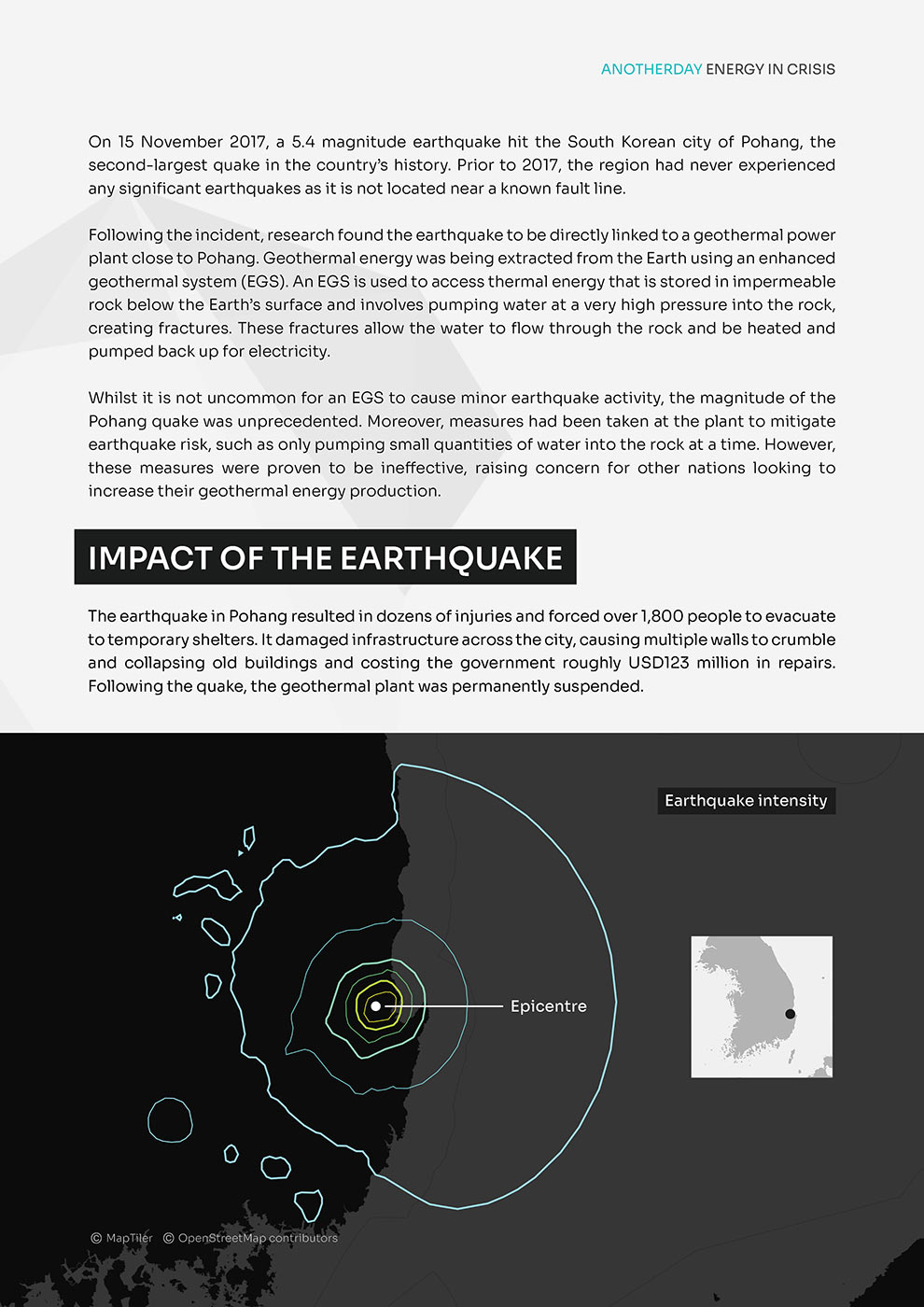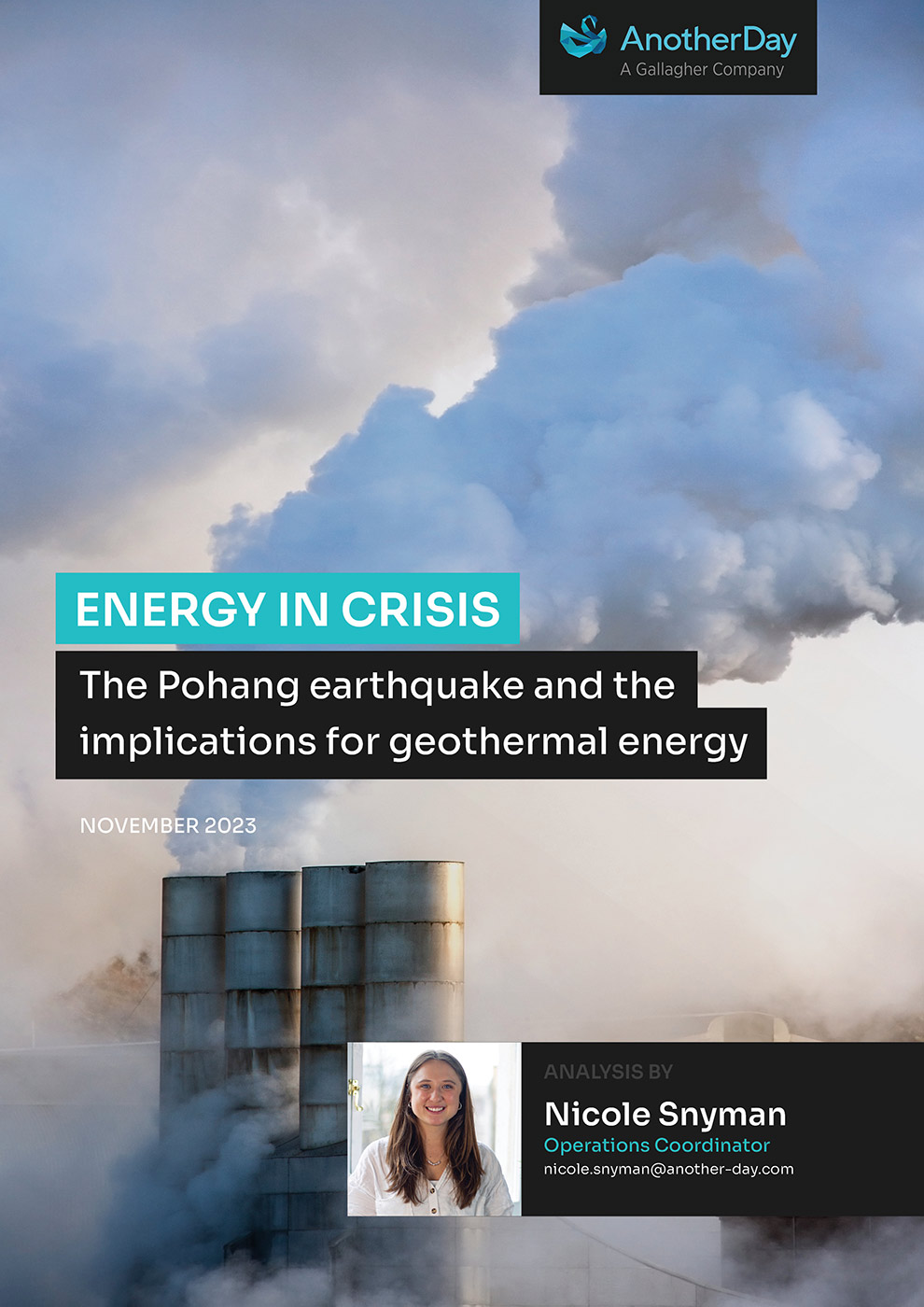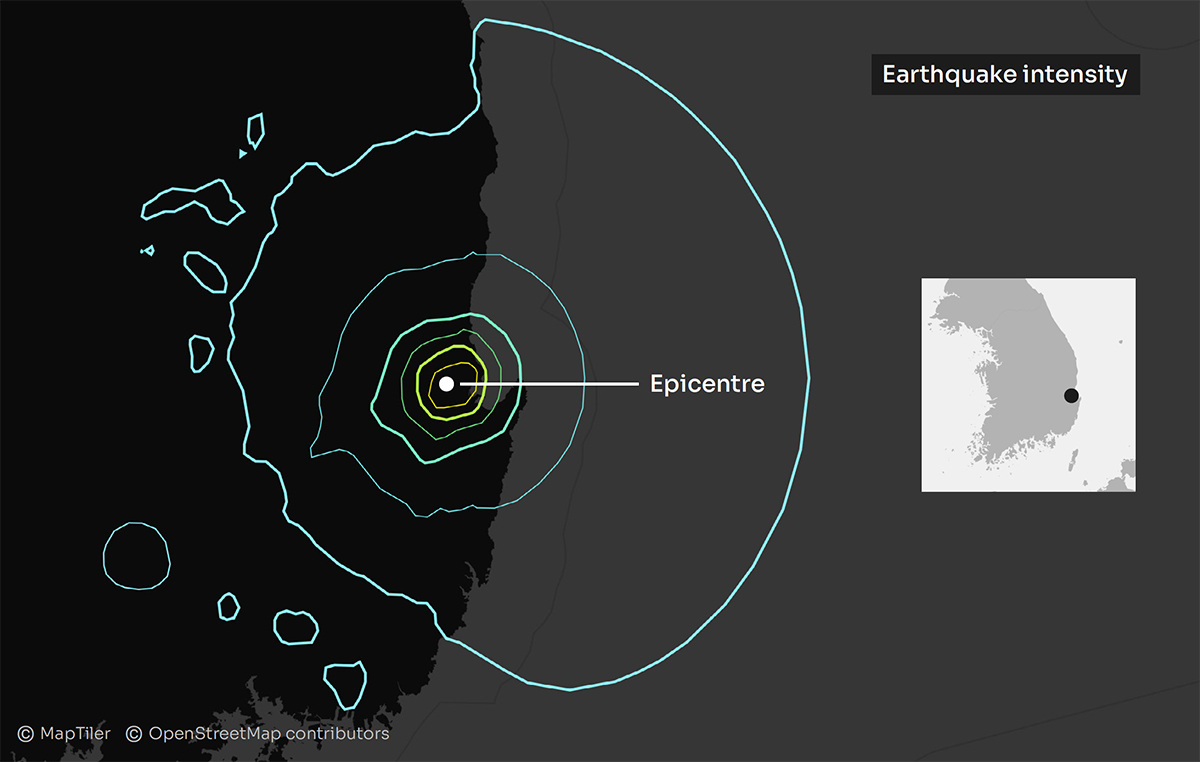The Pohang earthquake and the implications for geothermal energy





What's inside?
On 15 November 2017, a 5.4 magnitude earthquake hit the South Korean city of Pohang, the second-largest quake in the country’s history. Prior to 2017, the region had never experienced any significant earthquakes as it is not located near a known fault line.
Following the incident, research found the earthquake to be directly linked to a geothermal power plant close to Pohang. Geothermal energy was being extracted from the Earth using an enhanced geothermal system (EGS). An EGS is used to access thermal energy that is stored in impermeable rock below the Earth’s surface and involves pumping water at a very high pressure into the rock, creating fractures. These fractures allow the water to flow through the rock and be heated and pumped back up for electricity.
Whilst it is not uncommon for an EGS to cause minor earthquake activity, the magnitude of the Pohang quake was unprecedented. Moreover, measures had been taken at the plant to mitigate earthquake risk, such as only pumping small quantities of water into the rock at a time. However, these measures were proven to be ineffective, raising concern for other nations looking to increase their geothermal energy production.

Impact of the earthquake
The earthquake in Pohang resulted in dozens of injuries and forced over 1,800 people to evacuate to temporary shelters. It damaged infrastructure across the city, causing multiple walls to crumble and collapsing old buildings and costing the government roughly USD123m in repairs. Following the quake, the geothermal plant was permanently suspended.
Risks in other areas
The incident in Pohang is not an isolated one. In 2009, a geothermal project in Basel, Switzerland, was cancelled following a 3.4 magnitude earthquake which caused damage to buildings and infrastructure in the city.
Similarly to Pohang, an EGS plant had been constructed in Basel to extract and generate geothermal energy. The Basel earthquake caused roughly USD9 million worth of damage and resulted in roughly USD8 million worth of insurance claims against Geothermal, the company which led the project.
The Geysers geothermal plant in California – the largest in the world – is also known to cause minor earthquakes in the surrounding areas on a near-daily basis, causing frequent disruptions to the residents.
The future of geothermal energy
Geothermal energy is a valuable renewable energy source. Unlike solar and wind, it is a constant and reliable source of energy, independent of weather conditions. In addition, it can be accessed anywhere in the world, meaning that all countries can generate their own geothermal energy with the right technologies.
This has the potential to significantly enhance global energy security, reducing import and export dependency between countries and weakening the existing power dynamics within the global energy industry. Furthermore, geothermal power plants can contribute to local economic development by providing jobs and ensuring a stable energy supply to the region.
However, the Pohang earthquake and those observed in Switzerland and the US have led to growing concerns surrounding geothermal energy extraction. Communities living close to geothermal power plants are becoming increasingly fearful, and in some instances, local opposition has delayed or halted the construction of geothermal power plants. In Chaffee County, Colorado, for example, residents have been protesting for months against the development of an expansive new geothermal project.
For geothermal energy to become a reliable and safe global energy source, the precise cause of Pohang’s unexpected earthquake must be understood, and steps taken to mitigate a repeat of such an event. In order to fully maximise the environmental, economic, and geopolitical advantages of geothermal energy, it is essential to extract it in a manner that avoids creating wider environmental and social hazards.
Each week, our Threat Intelligence team will be analysing a different energy industry as part of our Energy in Crisis series (including Nuclear, Wind, Solar, Hydroelectric and more). Follow us here or on LinkedIn to stay up-to-date with the latest analysis.
Stay a step ahead in an increasingly complex and unpredictable world
Our consultants stay on top of the latest megatrends that influence how organisations are attacked, whether related to terrorism, criminality, war or cyber.
We document their analysis here. Be the first to see it.



